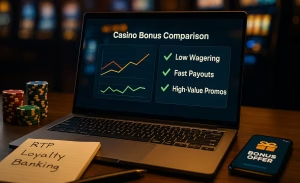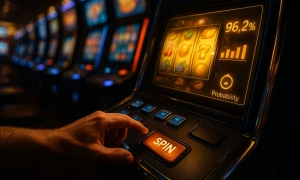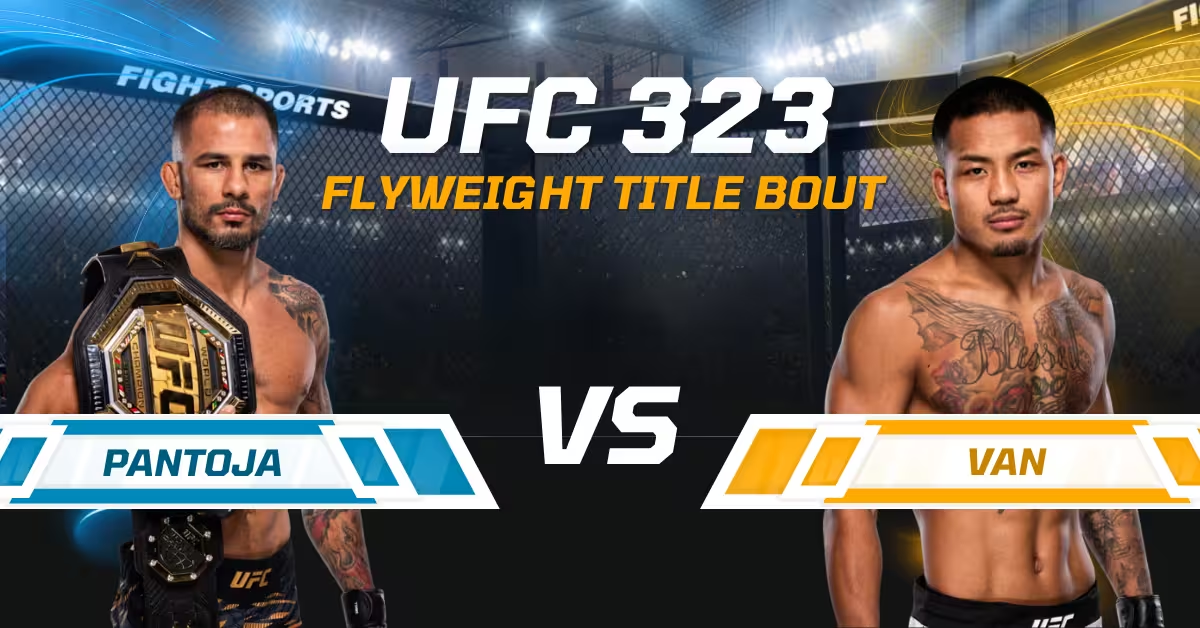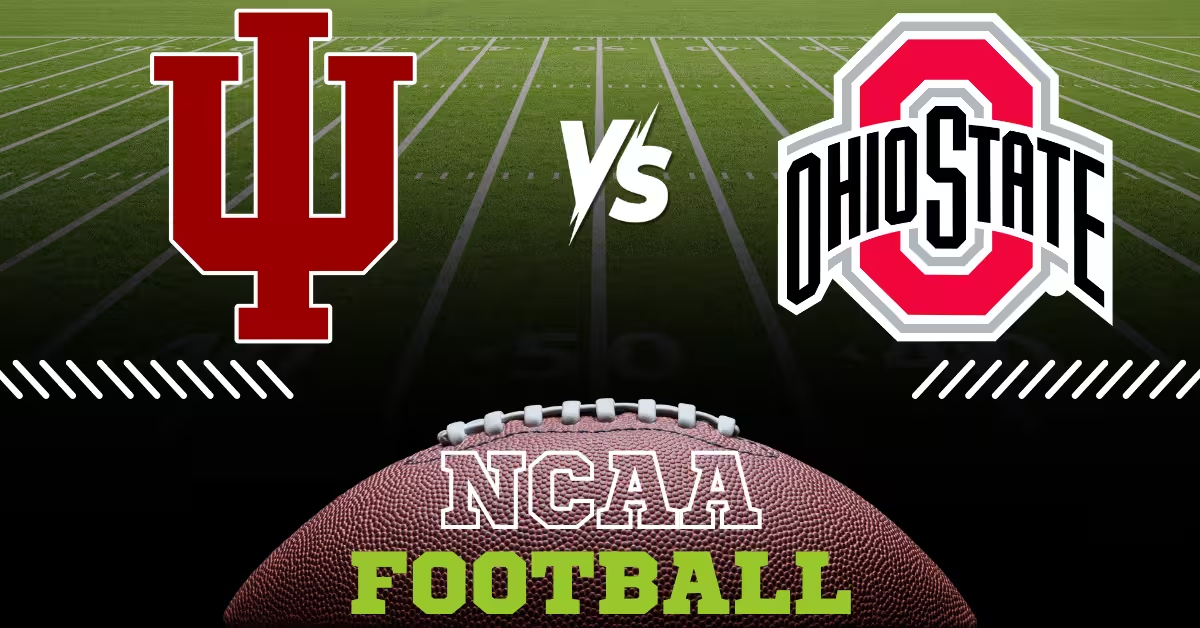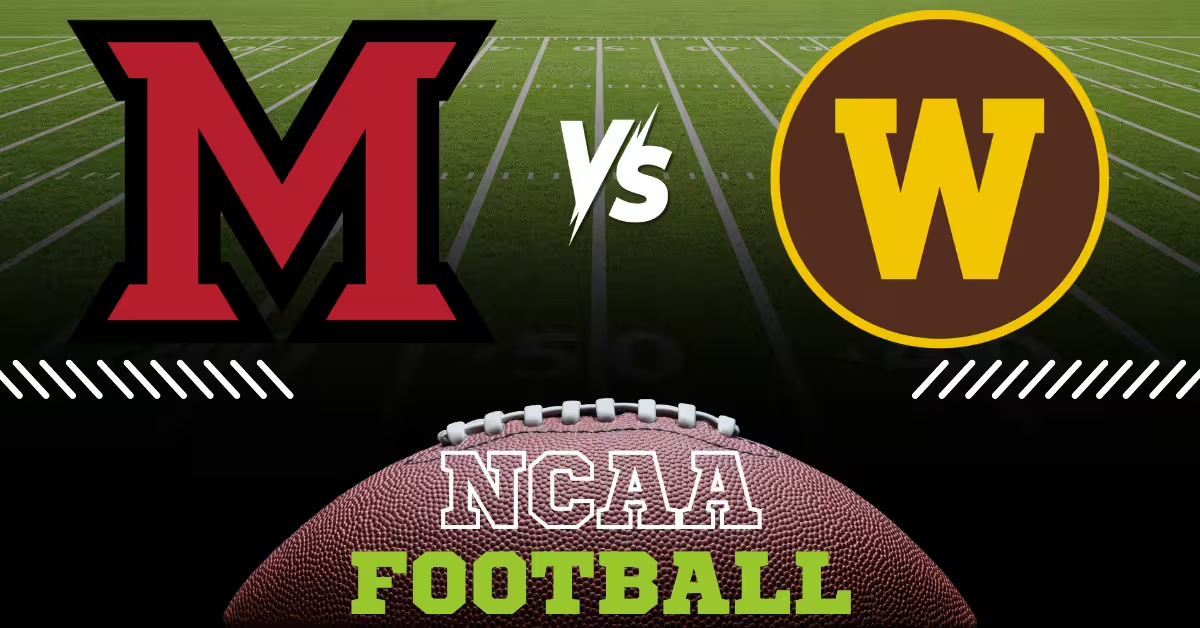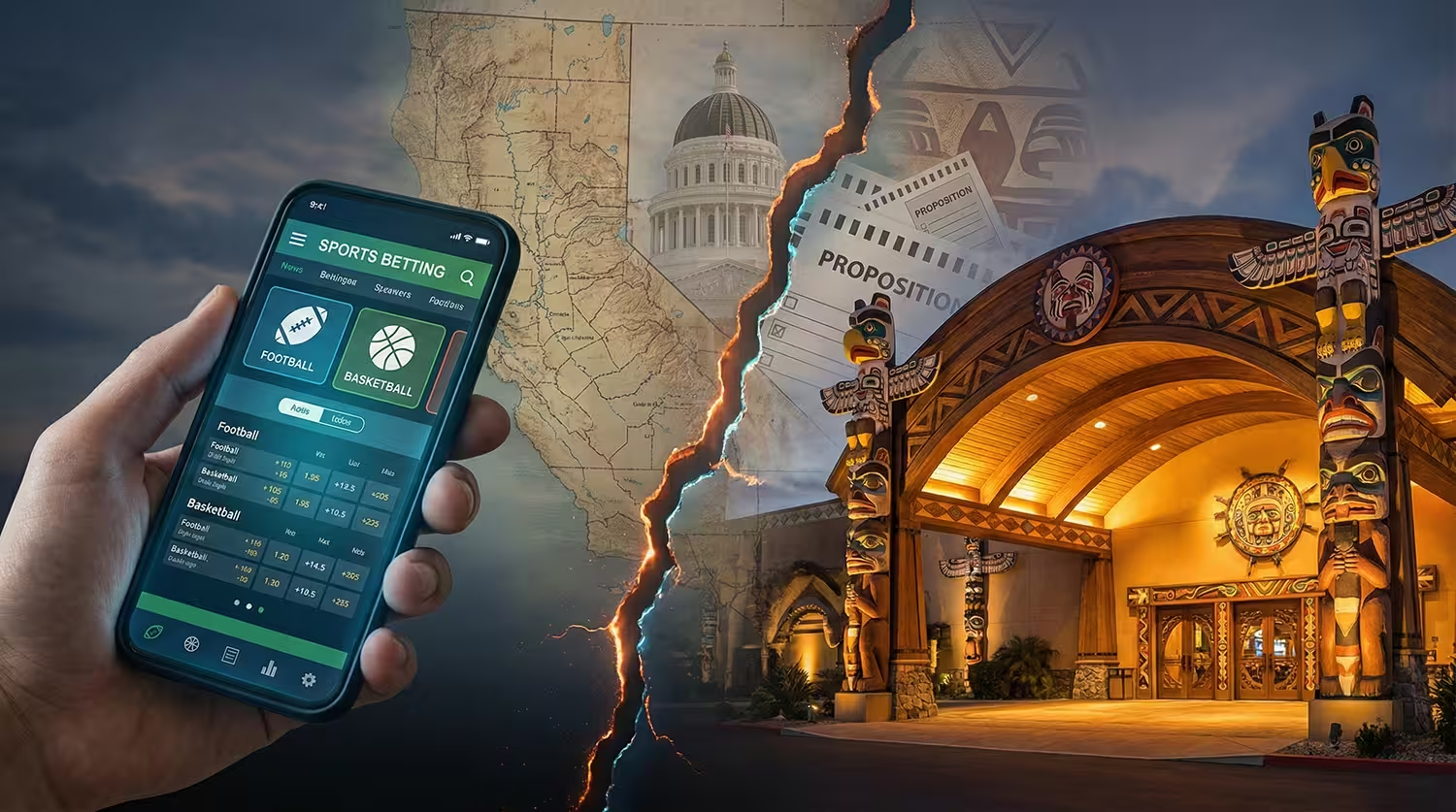Poker in the Post-MCOOP Era: What’s Next for Online Tournament Formats?
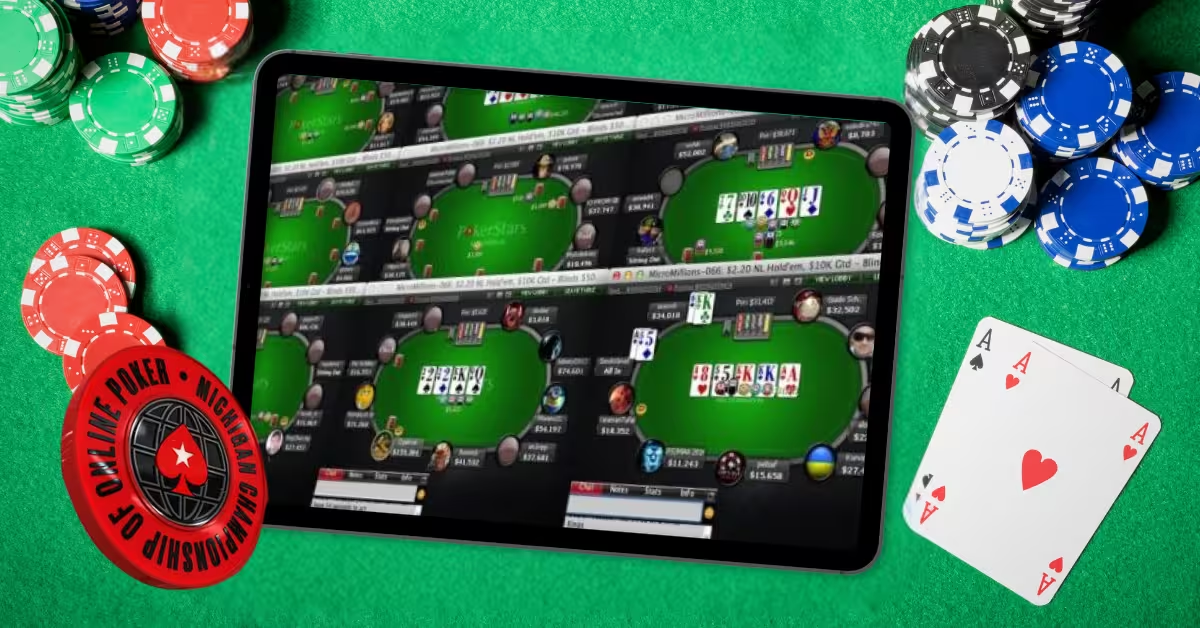
Michigan’s COOP was so much more than an online poker series; it was THE online poker event. Since 2021, it’s been an annual poker tourney where players logged onto PokerStars hoping to win big bucks.
It ended in 2024, but its legacy will live on. The Michigan Championship of Online Poker made a name for itself in regulated U.S. online poker; the state-level “championship” proved that a single-state online series could attract huge fields and prize pools that people thought were only possible on global sites.
In its inaugural year? The players in Michigan’s MCOOP won over $2.2 million during 60 events, a result that obviously exceeded the lower expectations. The success of it underscored MCOOP as a defining moment in U.S. online poker’s renaissance.
And even though there are other poker tournaments, MCOOP was beloved by Michiganders. After all, player pools are growing daily, prize pools are getting bigger, and AI is a part of gambling sites, so what’s up next for online poker competitions?
We wanted to dig into MCOOP to learn about its storied history, see how it shaped online poker, and the hand being dealt to future players. The deck’s being shuffled (so to speak), so let’s find out where it’s headed!
Rise and Legacy of MCOOP
The story behind it is a state poker market that reached new heights. When PokerStars Michigan introduced the Michigan Championship of Online Poker?! Not many people expected that its ripples would go so far beyond the Great Lakes!
Beginnings: Michigan’s Gamble
When PokerStars MI launched in January 2021, it came into a newly regulated market. The site officially went live on January 29, 2021, and that paved the way for MCOOP to follow in its footsteps.
The first MCOOP (back then it was referred to as “MICOOP”) started in February–March 2021 with 60 events, and buy-ins were anywhere from $10 to $500, and there was a $1,000,000 guarantee across the series. But it blew past those targets: as the series went on, the total payouts went up to $2.2 million with close to 32,000 total entries (including re-entries).
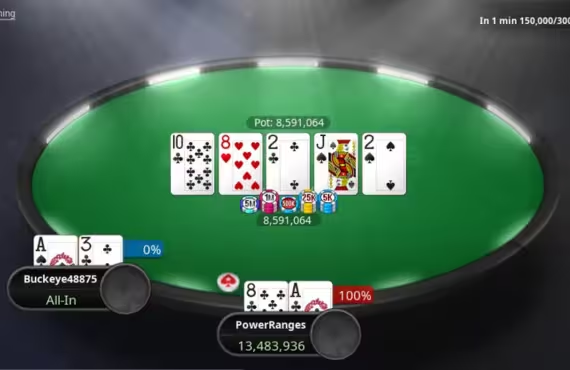
In Event #1, “PowerRanges” won the $100 buy-in Kick-Off tournament (with a $30,000 guarantee) by surviving a field of 883 players to collect $13,652. That early success proved that MCOOP could reliably generate large fields in a state-limited environment.
PokerStars didn’t stop there; it ran a second MCOOP edition in September 2021, and it expanded to 68 events with $1.5 million in guarantees. The decision to double down within the first year showed that it believed the model could scale.
By 2022, the MCOOP headline guarantee was $1.5 million (with a $150,000 guaranteed Main Event). The series wasn’t in a trial phase anymore; it was now a main event on the Michigan online poker calendar!
A Template for State-Level Poker
Before MCOOP, “state-level COOPs” in the U.S. didn’t exist on any type of scale. The idea of replicating global festival-level action within a single state was theoretical, but MCOOP turned that theory into practice.
Once the Michigan model proved it could generate big numbers, others followed suit. PokerStars rolled out PACOOP in Pennsylvania, NJCOOP in New Jersey, and in the states aligned them to run in parallel, and sometimes concurrently, with Michigan events. The very first MICOOP in Michigan ran at the same time as NJCOOP and PACOOP in 2021.
SCOOP and WCOOP gave them structural inspiration for the tournament; SCOOP, which was established in 2009, has always used a three-tier buy-in design to capture players at varying bankrolls.
WCOOP, which launched in 2002, is still PokerStars’ flagship global online series. MCOOP borrowed the festival mindset; it was a festival of tournaments, multiple buy-ins, and solid structure, but it was shrunken so it could operate within state boundaries under regulation.
That hybrid of ambition and constraint made MCOOP a template: to run big, but to run clean. It proved that you don’t need the whole world to build a championship; all you needed was a well-structured schedule, a range of stakes, and a dependable operator.
What MCOOP Proved
- Accessibility for Casual Players: The structure itself invited newcomers; buy-ins started as low as $10, satellites fed into big events, and a schedule included micro-stakes and mid-stakes side events, so MCOOP was in reach for players. Most of the participants had never entered a tournament before signing up. The lower barrier of entry allowed hobbyists and recreational players to share the space with the serious pros.
- Prize Pools That Shooketh Everyone: For a state-limited tournament series, the money MCOOP generated was startling. The first MCOOP’s total payout of $2.2M more than doubled its guarantee. The Main Event drew close to 1,300 entries, which was something that few predicted in a single-state legal market. As the player base grew and liquidity improved (especially once Michigan linked with other states via MSIGA), those guarantees became even bolder.
- Legitimization of U.S. Online Poker: In the years following Black Friday and the crackdown on offshore sites, U.S. online poker was fractured, distrustful, and stagnant. MCOOP changed that narrative, as it showed the “watchers,” (regulators, players, and the media) that a regulated operator could deliver major online tournaments transparently, pay out real money, and do it under oversight. The success of MCOOP changed skepticism into momentum: other states saw that the model worked and started to adopt their own COOP series or push for regulation.
Shifting Player Demographics & Preferences
Online tournament fields are not only getting bigger, but the players are changing! In the post-MCOOP boom, more and more casual players and newcomers are playing online tournaments; the most we’ve seen in over 10 years.
The reasons for this are twofold: lower buy-in events lowering the barrier to entry, and better mobile access makes poker playable wherever you are. An estimated 100 million people play online poker worldwide, and most of them do so on mobile devices.
The convenience factor has brought in recreational gamers who probably wouldn’t go to a casino. They play on commutes or work breaks, so operators adapt to shorter attention spans. Mobile players like shorter, faster sessions rather than marathons, and the trend is changing tournaments.
Tournament Fatigue & Faster Formats
Because the average online player skews more casual, there’s impatience with the all-day, wear-a-diaper (yes, this has happened and ewwww) tournament format of olden days.

Players want action and speed. Terms like “tournament fatigue” have hit the lexicon; even the die-hardest players admit that they don’t love sitting for 12 hours straight to find out if they min-cashed.
So, gambling sites are scheduling more turbo and hyper-turbo events, and also experimenting with entirely new structures to speed up the pace. The Americas Cardroom recently unveiled “Survivor Flip” tournaments with 20-second decision windows for each action; it’s a format explicitly created for people who don’t have the time to participate in longer games.
Hybrids and Live Crossovers
The high-stakes pros are gravitating toward hybrid schedules that mix online and live play. It’s not uncommon to see top players grinding online bracelet events from home one week and then flying to a live final table the next.
Pros seem to want a middle ground; they use online tournaments for volume and live events for the big paydays and prestige. This has decreased the presence of some “grinders” in day-to-day online MTTs, but it has also opened space for new names to win online.
Generational Shifts
The influx of Millennials and Gen Z players comes with new preferences as well. The younger players grew up on apps and video games that reward constant engagement, and they expect the same from poker.
Progressive Knockout (PKO) tournaments, in which bounties on players increase with each knockout, have boomed in popularity. The format offers immediate rewards for eliminations, which keeps action junkies involved even if they bust short of the money.
Bounty events use new strategies, and there’s the chance to win cash prizes faster than in traditional tournaments. For a generation that’s used to instant gratification, the fun of a bounty payday every time you bust someone is a huge draw. And formats like fast-fold poker, when you get a new hand instantly after folding, appeal to those who hate to wait.
Evolving Preferences
Here’s a snapshot of how younger and casual players are changing tournament poker:
- Micro-Stakes & Freerolls Boom: The lowest stakes tournaments and freerolls have never been busier. New players usually start out in the risk-free or tiny buy-in events for fun and practice. Operators are catering to this with daily freerolls and “micro-major” series that award real money for pennies.
- Late Registration & Re-Entries: Tournaments now allow late registration for hours and multiple re-entries; the features, while controversial, are really popular. Casual players love the flexibility to join a tourney after it starts, and busted players can fire again if they’re having fun. Almost every major online event has an extended late-reg period and at least one re-entry, and it’s a huge change from the freezeout-only days.
- Mobile-Optimized Experience: Sites have overhauled their interfaces for small screens and intermittent play. Basic, one-click actions, alert notifications, and the ability to multi-table on a mobile app are now standard. And tournaments are being designed with mobile in mind, with shorter blind levels, more breaks, and formats that can be paused or auto-folded if a connection drops.
The Tech Evolution: Where Platforms Are Going
Technology is the engine driving much of poker’s current evolution. Online poker sites today aren’t virtual cardrooms; they’re high-tech platforms leveraging everything from artificial intelligence to blockchain. Where is this tech revolution taking tournaments?
AI-Driven Tournaments
Not so long ago, AI in poker was the boogeyman; people associated it with illegal bots or unbeatable solvers. But now operators are using AI to enhance poker, not to ruin it.
This is being done with AI-assisted tournament management, and it automates tedious tasks like table balancing (instantly moving players to keep tables even) or futuristic concepts like dynamic structures that adjust based on play.
AI can perform “dynamic matchmaking” and “fairness balancing” in real-time, which guarantees that casual players aren’t being seated with sharks and that nobody is stuck short-handed for long.

AI is also bolstering security and integrity; modern poker sites use advanced machine learning systems to detect collusion, bots, and real-time assistance (RTA) in tournaments.
Multi-State & Shared Liquidity
On the regulatory front, technology is enabling the long-awaited pooling of players across states. The Multi-State Internet Gaming Agreement (MSIGA) is a game-changer: it allows U.S. states with legal online poker to combine their player pools.
For years, only a few small states (Nevada, Delaware, New Jersey) were linked. But Michigan joined, and in 2025, Pennsylvania came aboard, which created a four-state network under WSOP/888. Caesars Entertainment (WSOP) announced the “historic move” of pooling liquidity across NV, NJ, MI, and PA; it was the first operator to connect four U.S. jurisdictions.
This has huge implications for tournaments; with more players competing together, sites can offer bigger guarantees and a wider variety of events. A tournament that might get 200 players in one state could draw 800 with four states combined, turning a modest prize pool into a monster.
Multi-state poker also lets operators optimize scheduling, like staggering start times to suit Eastern and Pacific time zones, and run true “national” online championships.
Data and Adaptive Design
Online poker platforms sit on mountains of data about player behavior, and they’re harnessing that data to adapt tournament offerings in real time. We’re not far out from a scenario where, if the system notices players dropping out early or registering late en masse, it could tweak the structure on the fly, like shortening levels or extending late reg automatically in order to maximize engagement.
Matchmaking algorithms can also make sure that in the early levels, tables have a mix of skill levels (preventing all the top grinders from clumping together, which would intimidate newcomers). The goal is a more personalized and dynamic tournament experience in an area where online poker can innovate beyond the static format of live events.
Blockchain & Transparency
Another tech frontier is blockchain, and that means provable fairness. Some platforms, mostly the ones in the crypto poker space, are exploring blockchain-based shuffling to provide verifiable random deals.
Although mainstream sites haven’t fully embraced blockchain, they are watching those that have; it’s plausible that major operators will introduce optional “provably fair” tournaments or crypto-based entries for players who want that kind of transparency.
New Tournament Formats Gaining Traction
The classic No-Limit Hold’em freezeout will always have its place, but a slew of new formats have emerged to keep the game feeling fresh. Below are some of the tournament formats that are up and coming:
Once a niche variant, Progressive Knockout (PKO) tournaments are now a staple of the online scene, and arguably the hottest format of the past few years. In a PKO, every player has a bounty on their head, just like a regular bounty tournament. But when you knock someone out, you get only a portion of their bounty as immediate cash; the rest is added to your bounty. The successful bounty hunters become targets themselves, which means crazy shifts in incentive as the tournament progresses.
Why do players love PKOs? They introduce a fun, video game-esque dynamic to poker. Every elimination is a payday, and the bounty values keep growing. Even if you don’t reach the final table, you could make a killing (sometimes literally more than the eventual champion) by accumulating bounties. The format rewards aggressive play and adds lots of exciting all-in moments as players chase those knockout prizes. It’s super appealing to younger players and Twitch audiences, because something dramatic (and monetarily significant) happens every time someone busts.
The format has proven so popular that major series now feature PKO versions of marquee events; PokerStars’ Bounty Builders and partypoker’s KO Series are entirely built around PKOs. If the post-MCOOP era has an emblematic format, the Progressive KO could be it.
Leave it to poker to combine a lottery with a tournament. Mystery Bounty events are a newer phenomenon (first introduced live in 2021 ) that have rapidly gained traction both live and online. In a Mystery Bounty tournament, knocking out players can earn you a bounty – but you won’t know how much until you actually secure the knockout and draw from a randomized prize pool. The “mystery” is that bounties can vary wildly: one elimination might be worth $100, another might pull a golden ticket of $50,000 or more.
This format took off after the World Series of Poker debuted a live $1,000 Mystery Bounty event where one envelope contained a $1 million bounty prize. The sheer excitement of that lottery element caught everyone’s attention. As PokerNews Editor Calum Grant explains, “Mystery Bounty [tournaments] are the latest format to hit the live and online poker spheres. They’re extremely enticing to all types of poker players due to the exciting lottery aspect.” Unlike traditional PKOs, where you always know the bounty amount, Mystery Bounties keep players (and viewers) on the edge of their seats; any knockout could be a life-changing score. Even someone who barely squeaks into Day 2 could bust one player and potentially draw the top bounty, turning a middling finish into a massive payday.
Online, operators have begun to adopt the format. 888poker led the charge, running the first full Mystery Bounty online festival in 2022. GGPoker and others followed with Mystery Bounty tournaments in their schedules, but the challenge online is how to replicate the physical draw of an envelope. Different sites have tackled it with on-screen animations or delayed reveal cards. But the core appeal remains: an added layer of randomness and excitement. For recreational players, Mystery Bounties are a dream; you don’t even have to reach the final table for a shot at a huge prize; you just need to knock out the right person at the right time. And for pros, these events present interesting new strategy questions (like calling a shove becomes more attractive if the opponent is a “bounty carrier” and today might be your lucky day).
Expect to see Mystery Bounties become a fixture of major series. The engagement metrics speak for themselves; people on the rail love sweating the bounty draws. When a streamer or commentator peels the digital envelope to reveal a big bounty hit, it’s pure poker theater. And in the era of short attention spans? That’s gold.
For players who hate waiting (and who doesn’t?), fast-fold poker has been a godsend in cash games. But what about tournaments? Enter Zoom tournaments (PokerStars’ brand name) or generic fast-fold MTTs. In these tournaments, the fast-fold mechanic is applied: the moment you fold your hand, you’re instantly whisked to a new table for the next hand, instead of watching the current hand play out. This continues until the late stages, when the field shrinks and the game reverts to normal tables.
The result is a lightning-paced tournament experience. You can play far more hands per hour because any time you get a junk hand, you simply click “Fast Fold” and move on. As PokerStars describes it, “you don’t have to wait around for each hand to play out before playing the next one.” For action-hungry players, it’s a thrill; no more sitting bored through a slow orbit of folds, no more multi-tabling needed just to stay occupied. It’s poker’s answer to channel surfing.
Fast-fold tournaments are still a niche offering, but they’re gaining traction, especially among mobile players who might be playing in short bursts. These events tend to reach the money quickly, given how many hands are dealt, and they favor an aggressive style (since you’re always up against a fresh set of opponents, bluffing continuously becomes viable). One consideration: as the field gets smaller (the last few tables), the format has to switch back to normal, because you can’t fast-fold with nowhere else to go. PokerStars’ client automatically reverts a Zoom MTT to standard play when only a couple of tables remain.
Still, the early and middle stages of a fast-fold tournament are an interesting ride. They’re perfect for players with short attention spans or limited time, since you get a full tournament experience in a fraction of the usual time. We might soon see dedicated “Flash Tournament” schedules during prime mobile hours, or even fast-fold Sit & Go tournaments launching around the clock. As the famous saying goes (in this era at least): time is money, and fast-fold poker saves a lot of time.
One of the most interesting developments in tournament poker? That would be the merging of online and live play into single events or series. The COVID-19 pandemic forced some experimentation here ( the 2020 WSOP Main Event was half-online, half-live), and organizers are refining the concept in a post-pandemic world. Hybrid tournaments play the initial phases online and then transition to the final table or final day to a live setting for that face-to-face climax.
In 2023, the WSOP ran an “Online/Live Hybrid” $5,300 High Roller bracelet event. It was officially an online bracelet tournament, open to players in New Jersey and Nevada, paused when 6 players remained, and then reconvened live in Las Vegas for the final table. High-stakes pro Sam Soverel won the event, but not before navigating the logistical nightmare of an overnight flight for finalists. It was described as one of the more experimental events on the WSOP schedule, aka a test run of the hybrid model at the highest level.
In 2024, BetMGM (in partnership with Borgata in Atlantic City) ran multiple Online Hybrid Championship events as part of the Borgata Poker Open. Players played down to a final table online from their respective states (NJ or MI), and then the finalists were brought to a live setting (the Borgata poker room) to play for the title, and there was a live-stream so fans could watch.
We’re now seeing experiments in making poker tournaments more “gamified,” which means adding elements of video game design, skill progression, and AI-driven gameplay. The experimental formats are still in their beginning stages, but they foreshadow a future where a poker tournament could look super different from the freezeouts of the past.
The major area where it’s being implemented is with the use of AI as a participant or assistant in tournaments. No, the AI can’t play poker for you (that’s a no-no), but AI could be used as a tool within the tournament.
Americas Cardroom introduced something called “Poker Races, and players can opt to use AI avatars to play the early stages for them. The goal is to help fill skill gaps and take the pressure off of newer players in the opening levels. The kind of format has an AI play a push-fold strategy for you in the first phase, which guarantees that you don’t punt off too early.
It’s being used to make tournaments more inclusive, as it lets newbies stay in the game longer and makes the early game less boring. It also shortens the time commitment for everyone. Yes, poker purists will hate this, but don’t be surprised if more sites play with AI-assisted stages or training-wheels modes for newcomers in the near future.
Gamified tournament formats also have things like level-up systems, power-ups, and side objectives. Remember PokerStars’ now-defunct “Power Up” game? It had video-game style cards that could modify poker rules, and that was a radical example of gamification, but it wasn’t a big hit with players.
A more practical approach is to offer achievements or loot within a tournament. Some sites award “scalps” or tokens for knockouts that players can collect or trade. Others have discussed tournaments with XP points: as you advance, you unlock rewards or a higher status for future events. We haven’t seen a major implementation of that yet, but it’s on the horizon, given the industry focus on retention.
A concept that’s gaining traction is the “Battle Royale” style poker tournament. GGPoker rolled out a sit-and-go version of this: 100 players start, play a timed fast-fold phase until 50 remain, then play a short-handed phase until 15 remain, then those 15 play a final table for the money.
It’s a poker tournament that’s modeled after Fortnite or PUBG, where the field is rapidly whittled down in stages, and it’s incredibly fun and fast. We could see larger MTT versions of it, like scheduled “Battle Royale” tournaments where the software forces eliminations by certain time points by increasing blinds or by randomly seating players into all-in confrontations à la Flipouts.
Speaking of Flipouts, GGPoker’s Flip & Go tournaments are another gamified offering: all players go all-in every hand until one “flips” to the money, then it becomes a normal tournament.
And leaderboards and “Battle Pass” style rewards are being added to tournament play. Instead of a tournament being a self-contained thing, you have series-long leaderboards (with prizes to top point earners) or challenges (“Play 5 tournaments this week to get a ticket”).
PokerStars ran a COOP Leader Board with cash prizes and trophies for the best overall performers. It keeps players engaged past one event and taps into the psychology of completing objectives, just like video games do.
Regulation & Interstate Expansion
The Multi-State Internet Gaming Agreement (MSIGA) plays a major role in the next stage of online poker in the U.S.; it’s the policy scaffolding that’s behind everything from bigger prize pools to national-scale events.
MSIGA’s Role in the New Poker Economy
For years, online poker inside the U.S. operated in silos. Michigan, New Jersey, and Nevada each ran its own ring-fenced network, which forced operators to play small. MSIGA changed all of that! By letting licensed states share player traffic, it finally gave American poker the one thing it’s needed since 2011: scale.
A Michigan player can sit across from someone in Nevada or New Jersey, and a cross-state mix means larger fields, broader buy-in ranges, and prize funds that feel substantial instead of local. With that growth comes freedom, and operators can schedule more ambitious tournaments without worrying if there will be enough players to fill them.
The Current and Coming Lineup
- In the Pool Now: New Jersey, Nevada, Delaware, and Michigan.
- Next to Join: Pennsylvania has approved participation and is waiting on technical integration. West Virginia’s legislation is already in place; it just needs an active platform.
- On the Horizon: Connecticut and Illinois could follow once the licensing catches up.
Once Pennsylvania is connected, the active player base will double overnight. And for mid-level events, that means prize guarantees can climb into the hundreds of thousands without any risk.
What Shared Liquidity Changes
With bigger fields, tournament architecture changes as well. Operators can run multi-flight Main Events, spread start times across time zones, and add richer satellite systems that feed into national finals. The bigger pool also allows them to test out new formats, like progressive knockouts, mystery bounties, and hybrid live-online finales. All of these were never practical when each state was playing alone.
It’s already happening on WSOP.com, where Michigan, New Jersey, and Nevada players can compete in the same bracelet events. What started as a small regulatory compromise has turned into a functional nationwide network, giving American poker its first taste of unity in over a decade.
The Role of Esports-Style Integration
Poker’s future audience will not be built in casinos; it’ll be built on screens. The competitive ecosystem of esports has become poker’s unlikely reference point: streamable, interactive, and rooted in the idea that fans don’t just watch, they participate.

Streaming as the New Rail
Platforms like Twitch and YouTube Live have turned poker into a broadcast sport. Players run full tournament schedules on camera, narrating their thought process while chat rooms bet on outcomes, dissect hands, or tilt right along with them. Major operators now design events with streamers in mind; there are shorter breaks, visible chip counts, and on-screen integrations that mimic esports overlays. PokerStars’ Sunday majors and GGPoker’s high-stakes finales routinely draw audiences comparable to mid-tier esports competitions, proving the appetite for long-form poker content never went away; it just migrated online.
Team-Based Formats and Fan Interaction
Poker has always been an individual pursuit, but team structures are resurfacing through streaming communities and creator leagues. The Global Poker League, launched in 2016, was an early prototype: regional “franchises,” draft picks, and season-long standings. That format fizzled commercially, yet it seeded a concept now being revived in smaller online leagues and creator-led events. When streamers assemble squads to compete for cumulative prizes, it taps the same community loyalty that fuels esports fandom; viewers pick a team, follow storylines, and get emotionally invested in the results.
The ‘Poker Arena’ Concept
What poker borrowed most from esports is presentation. The idea of a Poker Arena isn’t metaphorical anymore, and studios like PokerGO in Las Vegas already stage finals in purpose-built venues, with LED set pieces, commentators, and audience seating. Online equivalents are emerging: GGPoker’s “Super MILLION$” broadcast and WPT’s creator championships are effectively digital arenas, complete with sponsorship graphics and live-chat overlays. Sponsorship models are also evolving, with energy drinks, peripherals, and crypto wallets replacing traditional casino advertising.
Poker isn’t trying to become esports, but it’s absorbing the parts that work: constant visibility, personality-driven storytelling, and engagement that continues way after the last hand.
Future Predictions: What’s Next for Online Poker Tournaments
Online poker is moving away from high-roller exclusivity and into a model that rewards consistency, creativity, and scale. A few trends already point toward where the next few years are heading.
- The Micro-to-Mid-Range Boom – Most tournament traffic now comes from the $5–$200 bracket. These buy-ins hit the sweet spot between entertainment and profit potential, creating sustainable ecosystems for both newcomers and semi-pros. Expect major sites to double down on “everyday championship” schedules; accessible events with polished production, live-stream coverage, and leaderboard incentives that keep players invested.
- Smarter, Fairer Tech – The same AI tools that once threatened online poker are being repurposed to protect it. Operators already deploy pattern-recognition systems that flag collusion or real-time solver use. Over the next few cycles, that tech will get granular enough to detect shared databases or hand-history correlation across accounts. On the player side, assistive software is inching toward legitimacy; not bots, but built-in equity calculators or risk dashboards that teach decision logic in real time, helping casual players learn without unbalancing competition.
- Personalized Tournament Architecture – Large data sets allow sites to tailor formats to player behavior. Expect experiments with adaptive buy-ins, where players can enter at multiple price points contributing proportionally to one prize pool, and dynamic guarantees, which rise automatically when registration spikes. The goal isn’t randomness; it’s elasticity, ensuring every series feels alive instead of pre-baked.
- Gamified Loyalty Systems – Retention will hinge on engagement loops borrowed from mainstream gaming. Think of a “battle pass” for poker — a progression ladder that unlocks avatar upgrades, freeroll entries, or cash bonuses for hitting volume milestones. Sites like GGPoker already run achievement systems where knockouts, final tables, and cumulative earnings feed into seasonal rankings. It’s not window dressing; it keeps players playing, which in turn fuels tournament liquidity.
- Digital Collectibles and On-Chain Recognition Poker’s identity trophies are also going digital. NFT badges or blockchain-verified achievements are starting to replace forum signatures and screen-name clout. A tournament winner might receive a tradable token that proves the victory and unlocks future perks, like entry discounts, sponsorship eligibility, or access to invite-only events. The appeal isn’t speculation; it’s permanence. For the first time, online results could live on an open ledger instead of vanishing when a site rebrands or shutters.
The Best Poker Sites Out in Front
The competition among poker platforms is fierce, and it’s not just about the aesthetics. What matters now is which operator can sustain long-term engagement, expand liquidity, and keep tournament formats evolving. Here are the four poker sites that are doing it right!
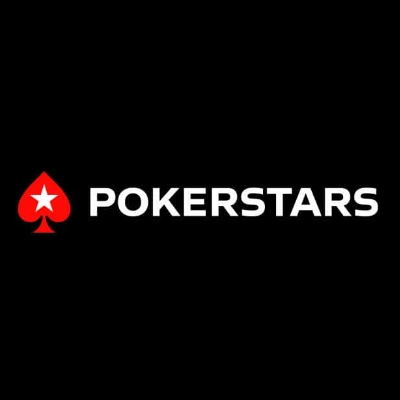
PokerStars
PokerStars defines the standard for organized tournament ecosystems. Its flagship series (SCOOP, WCOOP, PACOOP, and USCOOP) show how global concepts can adapt to regional markets. The integration of Michigan and New Jersey under a shared player pool gave PokerStars a huge advantage in guarantee size and field depth.
The 2024 launch of the Power Path qualifier system marked another big change: it changed traditional satellite routes into season-long ladders that let players start with micro buy-ins and advance toward marquee live or online finals. The structure has been praised for maintaining player engagement across multiple stages instead of compressing the experience into a single weekend.
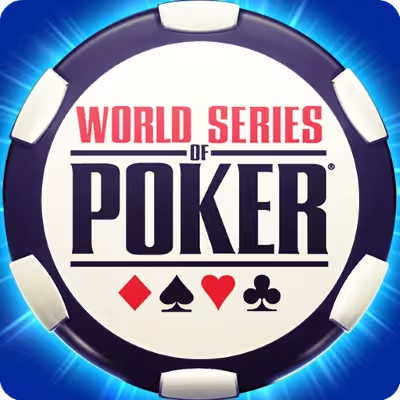
WSOP
The World Series of Poker is still the most recognizable brand in the industry because it connects the online and live circuits in ways that no competitor can totally replicate. The combined liquidity between Nevada, New Jersey, and Michigan enabled WSOP to host its largest-ever online championship in 2025, and there were over $20 million in total guarantees.
The hybrid model begins online and concludes during the live summer series in Las Vegas, bridging the two environments. For players? The connection means an online bracelet carries the same legitimacy as a live title, and no one saw that coming in the early years of regulation.
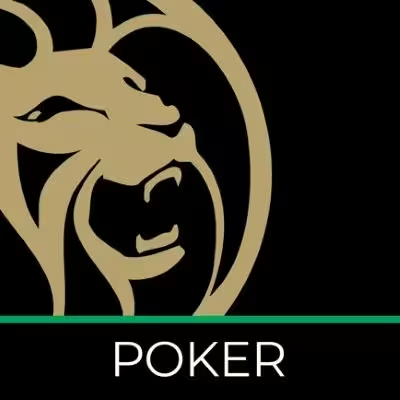
BetMGM Poker
BetMGM Poker knows who it is, and its identity in the mid-stakes market concentrates on structure, pacing, and player comfort. The recurring Online Championship Series runs several times a year and guarantees multimillion-dollar prize pools across Michigan, Pennsylvania, and New Jersey.
What distinguishes BetMGM is its dynamic blind-level adjustment; it modifies level duration based on field size to maintain a predictable runtime without shortening gameplay quality. The site’s cross-platform rewards program means that poker players can redeem loyalty points across its sportsbook and casino products; it’s a model that integrates poker into a bigger entertainment network instead of treating it as a standalone game.
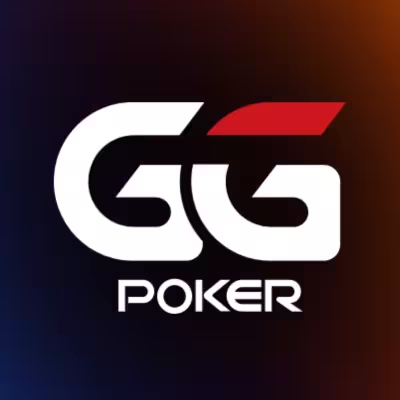
GGPoker
GGPoker has established itself as the industry’s global laboratory for tournament design. Its recurring events, like the Bounty Hunters Series and Super MILLION$ Week, combine massive fields with really high production value. All final tables are streamed with professional commentary, complete with integrated staking features that let viewers invest directly in players before the event starts.
The client’s interface has built-in analytics, hand-history visualization, and transparent staking markets, so there’s a sense of participation that is like live poker’s social energy.
Adapt or Fold: How Poker Tournaments Are Forever-Changed
Online poker doesn’t have to reinvent itself, but it does have to mutate for a changing audience and its tastes. A few years ago, tournaments were seasonal things and event-based. There was a SCOOP here, and a COOP there. But now? There’s always one going on, and they’re accessible to millions via cross-state networks, creator streams, and formats that didn’t exist 10 years ago!
As for the best places to play? You’ve got PokerStars, BetMGM, and GGPoker. All of the platforms have their upsides and something for every kind of poker player. The game is now continuous, responsive, and so much easier to follow for people who haven’t been playing for years.
The game didn’t need an entire reboot; it just needed a little oxygen, and regulation supplied it. Technology? That made it highly visible. And the operators that treat poker like a living product and not as a one-off nostalgia act are the ones that are at the forefront of the new poker world.

Alyssa contributes sportsbook/online casino reviews, but she also stays on top of any industry news, precisely that of the sports betting market. She’s been an avid sports bettor for many years and has experienced success in growing her bankroll by striking when the iron was hot. In particular, she loves betting on football and basketball at the professional and college levels.

